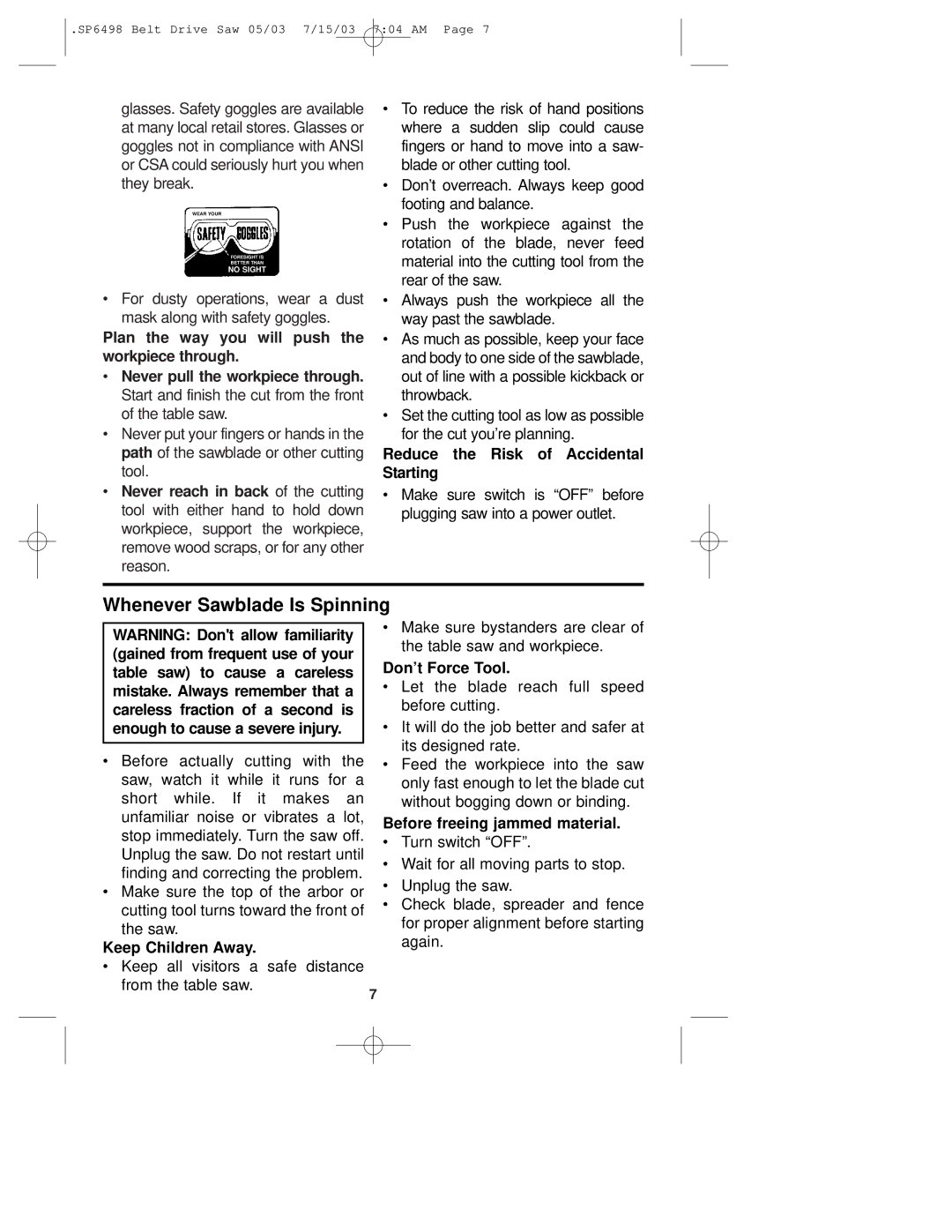
.SP6498 Belt Drive Saw 05/03 7/15/03 7:04 AM Page 7
glasses. Safety goggles are available at many local retail stores. Glasses or goggles not in compliance with ANSI or CSA could seriously hurt you when they break.
WEAR YOUR
FORESIGHT IS
BETTER THAN
NO SIGHT
•For dusty operations, wear a dust mask along with safety goggles.
Plan the way you will push the workpiece through.
•Never pull the workpiece through. Start and finish the cut from the front of the table saw.
•Never put your fingers or hands in the path of the sawblade or other cutting tool.
•Never reach in back of the cutting tool with either hand to hold down workpiece, support the workpiece, remove wood scraps, or for any other reason.
•To reduce the risk of hand positions where a sudden slip could cause fingers or hand to move into a saw- blade or other cutting tool.
•Don’t overreach. Always keep good footing and balance.
•Push the workpiece against the rotation of the blade, never feed material into the cutting tool from the rear of the saw.
•Always push the workpiece all the way past the sawblade.
•As much as possible, keep your face and body to one side of the sawblade, out of line with a possible kickback or throwback.
•Set the cutting tool as low as possible for the cut you’re planning.
Reduce the Risk of Accidental Starting
•Make sure switch is “OFF” before plugging saw into a power outlet.
Whenever Sawblade Is Spinning
WARNING: Don't allow familiarity (gained from frequent use of your table saw) to cause a careless mistake. Always remember that a careless fraction of a second is enough to cause a severe injury.
•Before actually cutting with the saw, watch it while it runs for a short while. If it makes an unfamiliar noise or vibrates a lot, stop immediately. Turn the saw off. Unplug the saw. Do not restart until finding and correcting the problem.
•Make sure the top of the arbor or cutting tool turns toward the front of the saw.
Keep Children Away.
• Keep all visitors a safe distance from the table saw.
7
•Make sure bystanders are clear of the table saw and workpiece.
Don’t Force Tool.
•Let the blade reach full speed before cutting.
•It will do the job better and safer at its designed rate.
•Feed the workpiece into the saw only fast enough to let the blade cut without bogging down or binding.
Before freeing jammed material.
•Turn switch “OFF”.
•Wait for all moving parts to stop.
•Unplug the saw.
•Check blade, spreader and fence for proper alignment before starting again.
